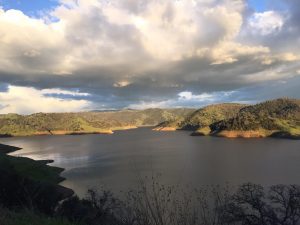Tri-Dam Partners Weigh In On Water Board’s Planned Fish Flows
Oakdale, CA — The Tri-Dam Project partners today shared data they say further shows why state water officials should not require more water flushing for fish flows.
The Oakdale (OID) and South San Joaquin (SSJID) irrigation districts, senior water rights holders who developed New Melones Reservoir, work closely with the Bureau of Reclamation, which as part of its Central Valley Project, manages the fish flows at New Melones Dam.
The state water board and its staff on Friday closed public comments on the proposal to flush more than an extra 300,000 acre-feet of water down the Stanislaus and two other rivers from February 1 to June 30 annually with the intent to improve fish and wildlife conditions and control Delta salinity under its Bay-Delta water quality control program first-phase.
In a joint statement released today, OID and SSJID say the amount, which is enough to serve about one million families, adds up to a scientifically unsupported effort that might yield perhaps 1,100 more salmon.
The districts’ analysis of the state’s unimpaired flows plan forecasts that San Joaquin, Stanislaus and Merced counties would suffer an economic loss of $12.9 billion in the first year that the higher flows would be required. The state’s figure estimates the regional economic impact at just over $106 million.
In addition to numerous other potential ag and water customer impacts, the districts also estimate that New Melones reservoir would go dry 12 times out of every 95 years and that combined, there would be a loss in the ability to produce as much as $10 million in clean hydroelectric power a year from facilities at New Melones and Tulloch reservoirs.
As reported here last Friday, the Modesto (MID) and Turlock (TID) water districts shared as the public comment period was closing their condemnation of the proposed plan. The districts cited, among several reasons, that it largely ignores the vast body of scientific data and technical information compiled over the last 20-plus years.
As reported here, Tri-Dam recently released the findings of a contracted long-term study conducted by FISHBIO, which stated as part of the findings that fall fish flows down the Stanislaus River could be reduced at least in half without negative impacts to fish. A long-term study on the spring flows is still underway.
It is anticipated that the water board’s final river flows plan will be announced this fall, followed by a 45-day window for more public input before its formal vote.

